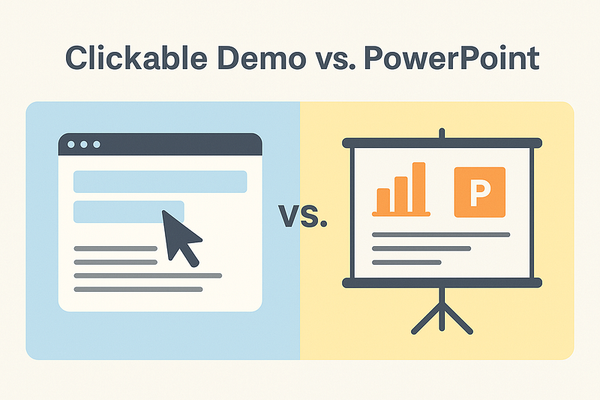The CTO’s Edge: From Technical Leader to Technology Executive
Years ago, I got passed over for a role I thought I had in the bag. I’d led complex projects, built high-performing teams, and stayed…

Years ago, I got passed over for a role I thought I had in the bag. I’d led complex projects, built high-performing teams, and stayed hands-on with the tech. I thought I was an excellent fit for the role, but when I asked for feedback, the recruiter didn’t discuss any gaps in my experience or skills; they simply said, “We need someone who thinks a little more strategically about business value.”
That experience had a significant impact on me, and I remember thinking about every system I’d improved, every process I’d optimized, and realizing that none of it mattered if I couldn’t connect the dots to how it impacted the business. That was the moment I stopped thinking like a technician who managed people and started thinking more like an executive who leveraged technology to deliver value to the business. Honestly, I never thought about technical debt in the same light after that experience.
False Assumption: More Tech Skill = More Leadership
For most of my career, I believed that promotions come from mastering new technologies, learning the latest frameworks, leading larger teams, and managing more complex systems. Coming from technical roles, we often focus our career progression on increasing scale and becoming skilled at managing delivery and operations. We expect to be rewarded with promotions eventually.
But suppose you aspire to become a technical executive, whether it be a CIO, CTO, CISO, or any of the buzzword titles. What truly sets top professionals apart is not just technical skill, but also their perspective and ability to collaborate at a strategic level. Executives focus on business risk, growth opportunities, customer friction, and capital efficiency. They think less about the actual technical decision and more about how that decision impacts the business and organization.
The Shift That Changed Everything
The moment I got the feedback that “We need someone who thinks a little more strategically about business value,” I realized I wasn’t going to code my way into the C-suite.
So I made a conscious pivot. It wasn’t overnight, but it was done with intention.
Here’s what I stopped doing:
- Reading only tech blogs and obsessing over new tools or frameworks.
- Chasing system perfection that no one outside IT understood or cared about.
- Staying within comfort zones, such as tech meetups, vendor forums, and developer circles.
And here’s what I started doing:
Worked to understand the business, our customers, and the larger market. I spent time reading market reports, speaking with clients to understand their problems, and attending business-focused conferences to gain a deeper understanding of what was happening outside the technology sector.
I got outside my immediate sphere of influence. No longer just attending IT leadership meetings or waiting for someone to “loop me in.” I started showing up and sitting in on product roadmap reviews, listening in on finance calls, participating in sales calls with prospects, and attending ops huddles. My goal was to gain a deeper understanding of how decisions were made, what the real priorities were, and how technology was either enabling or slowing things down. That exposure altered my perspective on my role and how others perceived me.
I also shifted my focus from system stability to business outcomes. I spent time learning and understanding that what moved the needle was whether the technology was driving results: faster onboarding, higher conversion rates, reduced churn, and increased margins. I stopped asking, “Is the system working?” and started asking, “Is the system creating value?” That simple shift reframed every project, every roadmap, every conversation with the business.
Over time, I stopped being the “tech guy” explaining constraints and instead became the leader offering levers and solutions to business problems. It changed everything. Conversations with executives got easier. My proposals started landing.
The Results: Credibility Shift, Not Just Career Growth
The shift wasn’t just internal; people around me began to notice.
I wasn’t being brought in after decisions were made. I was asked to help develop solutions, not just implement solutions that others had created. I started getting drawn into conversations that used to happen above me, such as early-stage strategy, new market planning, and M&A discussions. Not because I had all the answers, but because I was thinking like they were: in terms of growth, risk, value, and speed.
I could connect technical realities to executive priorities without getting lost in the weeds. That gave me a different kind of credibility, not as the smartest technologist in the room but as a trusted partner who could turn tech into traction.
That changed my career trajectory more than any certification or system migration ever did.
The Challenge: Your Next 30 Days
If you take nothing else from this, take this: Start thinking more like your CEO…
For the next 30 days, focus on learning about your business, your clients, and your market. Not everything, but learn something about each.
Pick something core to the business:
- Your Business: What’s your value proposition? What financial metrics matter to the business?
- Your competitors: What differentiates your company from them? Why do we win or lose against them?
- Your clients: What problem do you solve for them? What are their pain points? Review a recent win/loss summary.
- Your leadership: What keeps your CEO, C-suite, or Board up at night? What’s their vision for the company?
- Your financial sponsors: Whether it’s VCs, PEs, or a public company, what does the value creation plan depend on? How is tech enabling that story?
This isn’t about becoming an MBA overnight. It’s about building context because context is what makes you credible when it counts.
You want a seat at the table? Then you have to understand the table, what it’s for, and who sits there. Most importantly, you need to know what they care about.


